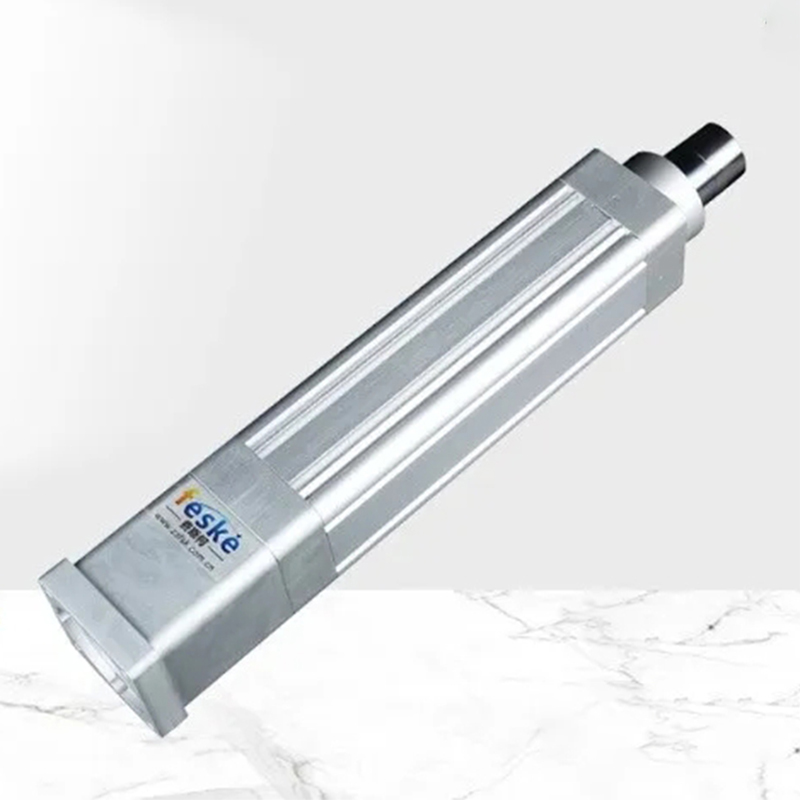With the development of industrial technology, domestic servo electric cylinder systems have gradually risen and are widely used in many equipment industries. Feske electric cylinder systems have the characteristics of high-speed response, accurate positioning, and smooth operation. The following briefly introduces the characteristics of various servo electric cylinder systems.
DC servo electric cylinder system
The DC servo electric cylinder introduces a mechanical commutation device. It has high cost, many faults, and difficult maintenance. It often affects production due to sparks generated by carbon brushes and generates electromagnetic interference to other equipment. At the same time, the commutation capacity of the mechanical commutator limits the capacity and speed of the motor. The armature of the motor is on the rotor, which makes the motor inefficient and poor in heat dissipation. In order to reduce the leakage inductance of the armature, the rotor becomes short and thick, improves the commutation ability, and affects the dynamic performance of the system. The working principle of the DC servo electric cylinder is based on the law of electromagnetic force. Related to the electromagnetic torque are two independent variables, the main magnetic flux and the armature current, which control the excitation current and the armature current respectively, and can easily control the torque and speed. On the other hand, from the control perspective, the control of DC servo is a single-input, single-output, single-variable control system. Classical control theory is fully applicable to this system. Therefore, the DC servo system is simple to control and has excellent speed regulation performance. It has occupied a dominant position in the feed drive of CNC machine tools.
AC servo electric cylinder system
In view of the defects of DC electric cylinder, if it is turned "inside out", that is, the electric drive winding is assembled on the stator and the rotor is the permanent magnet part, and the magnetic pole position is measured by the encoder on the rotor shaft, it will form a permanent magnet brushless motor. At the same time, with the practical application of vector control methods, the AC servo system has good servo characteristics. Its good technical performance such as large speed regulation range, high precision, and fast dynamic response makes its dynamic and static characteristics comparable to those of DC servo systems. At the same time, it can realize weak magnetic high-speed control, broaden the speed regulation range of the system, and meet the requirements of high-performance servo drive.
Stepper servo electric cylinder system
The stepper servo system has a simple structure and meets the needs of system digital development, but it has poor precision, high energy consumption, low speed, and the greater its power, the lower the moving speed. In particular, stepper servos are prone to losing steps, making them mainly used for economical CNC machine tools and old equipment renovations that do not require high speed and precision. Stepper servo is a control system that uses pulse signals for control and converts pulse signals into corresponding angular displacements. Its angular displacement is proportional to the number of pulses, and the speed is proportional to the pulse frequency. The speed of the motor can be adjusted by changing the pulse frequency. If some windings remain energized after shutdown, the system also has self-locking capabilities. Stepper motors have a fixed number of steps per revolution, such as 500 steps, 1000 steps, 50,000 steps, etc. Theoretically, their step errors will not accumulate.
Guangdong Feske Automation Technology Co., Ltd. is a company specializing in automation equipment, with direct shipment from the manufacturer, preferential prices, quality assurance, and worry-free after-sales service.



